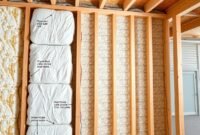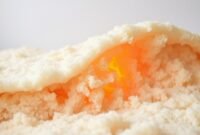Installing an insulation system in a pole barn building cannot be overstated. The right insulation helps control the temperature and manages air flow and heat loss, which are crucial aspects of this construction type.
Below, you will find a list of the best insulation for the pole barn for the ceiling and walls.
Best Insulation for Pole Barn Ceiling
Determining the best insulation for pole barns is not the easiest, especially considering the options. That’s why the list below provides the two best options for insulation systems for the ceiling of your pole barn.

- Insulation blanket
To install an insulation blanket, you will need to set the blanket about 30 inches below the pole barn ceiling. This is meant to create some space for airflow below the ceiling surface and the insulation blanket.
By creating some room for air between the blanket and the ceiling, the insulation system can effectively control the heat within the property and maintain a comfortable temperature inside.
- Spray foam
Spray foam, particularly closed-cell spray foam, is another excellent insulation choice for a pole barn. This foam insulation vs. fiberglass type offers superior energy efficiency by effectively reducing heat transfer and blocking cold air.
However, installing spray foam insulation, especially closed-cell types, requires professional installation and is costlier than an insulation blanket. Additionally, it acts as a vapor barrier, preventing moisture buildup within the interior wall cavities.
There are two types of spray foam: closed- and open-cell spray foam insulation. Both can create an airtight seal but differ in humidity permeability, noise reduction capability, blowing agent, and formula.
Open-cell spray foam is ideal for covered ceilings, while closed-cell foam is more suitable for exposed ceilings because it possesses more durability. Both are relatively complicated to install and have specific equipment, so they don’t fit for DIY projects.
- Loose-fill insulation
This insulation system can effectively regulate temperature flow and prevent mildew and mold growth by eliminating condensation. Moreover, the material is rated Class A for fire resistance, making it flammable.
Loose-fill insulation, often used to create thermal breaks in hard-to-reach areas like attics and ceilings, is widely used for places that can’t be easily reached. While it’s possible to install it on your own, you’d need a high-powered insulation blower, which can be purchased or rented from a nearby home improvement store. This method helps reduce energy costs by ensuring a consistent insulation layer throughout the space.
It also has to be noted that the loose-fill insulation installation process requires training, protective gear, and special equipment.
Read also: Foam Board Pole Barn Insulation Pros and Cons
Best Insulation for Pole Barn Walls
Here are the best insulation options for the walls of your pole barn:
- Fiberglass Batts
This material is the most commonly used wall insulation due to its easy installation, reasonable cost, environmentally friendly, and fire resistance qualities.
Fiberglass is mainly composed of glass. It is available in rolls and panel forms, supporting flexible installation. Generally, its energy-saving nature can help decrease 40-50% of energy bills and help dampen noise.
- Vinyl Back
The vinyl back is another fiberglass batt form, but it’s layered white on its backside. This material has a thinner dimension compared to fiberglass batt. However, it makes vinyl back, which also has a lower R-value.
- Rigid Board Insulation
These boards are usually located directly beneath the steel siding. Rigid Board Insulation, or foam board, located directly beneath the steel siding, offers an extremely high R-value and consistent coverage. It is excellent in reducing heat transfer and promoting less air infiltration.
However, it’s important to remember that not all rigid board products are equal. You must ensure that the one you choose is approved for pole barn installation.
Read also: How To Easily Insulate Your Walls
When considering insulation materials for your pole barn building, it’s essential to weigh factors like heat loss, airflow, and the ability to reduce heat transfer. The right insulation will ensure a comfortable and energy-efficient environment within your pole barn.
Creating the right decision regarding the best insulation for a pole barn ultimately results in a properly insulated building that performs well over the years. Whether you want to install the insulation by yourself or with the help of a professional, it’s essential to consider the best possible material and system for the construction.
Optimizing Energy Efficiency and Moisture Control in Pole Barn Insulation
When selecting the best insulation for pole barn walls and ceilings, it’s important to consider the overall energy efficiency of the building. Closed-cell spray foam insulation, while more expensive, can significantly reduce energy costs in the long run due to its excellent thermal properties.
Additionally, incorporating a vapor barrier with your insulation choice, especially in areas prone to moisture, can enhance the longevity and effectiveness of the insulation.
Choosing materials that complement the exterior insulation while addressing specific needs like moisture control and air sealing is crucial for interior walls.
Conclusion
In conclusion, the best insulation for a pole barn requires careful consideration of factors such as energy efficiency, moisture control, and the structure’s specific needs. Whether opting for spray foam, loose-fill, or other types of insulation, the goal is to achieve a well-insulated, energy-efficient, and comfortable space.


